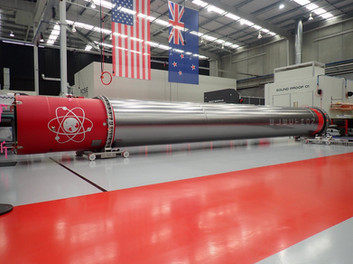A Light-Class rocket will take off from Mahia Peninsula

May 02, 2022 Rocket Lab (NASDAQ: $RKLB) The “There And Back Again” Launching the Company's Electron Rocket from the Pad 1A platform at Launch Complex 1 on New Zealand's Mahia Peninsula, The mission will deploy 34 satellites to a sun-synchronous orbit for a variety of customers including Alba Orbital, Astrix Astronautics, Aurora Propulsion Technologies, E-Space, Spaceflight Inc., and Unseenlabs, and bring the total number of satellites launched by Electron to 146.
Payload Manifest:
BRO-6, a 6U cubesat from France, by UnseenLabs
AuroraSat-1, 1.5U cubesat from Finland by AuroraPT
TRSI-2 and 3, two pocketcube 1p satellites from Germany developed by My Radar
MyRadar-1, pocketcube 1p from Germany developed by My Radar
Unicorn-2, pocketcube 3p from UK
1U copy of New Zealand, by Astrix Astronautics
Three E-Space satellites
24 US SpaceBEE 0.25U size satellites
"We don't usually give Mother Nature power over the launch date, but for our first helicopter capture attempt, we want to have the best possible conditions to give us the best chance of a successful capture," Rocket Lab said. “Over time, we will tighten those boundaries.”
The original launch opportunity was Sunday, May 1, when the window would open at 18:35 EST (22:35 UTC) and close at 20:40 EST (00:40 UTC). However, today RocketLab announced on twitter that “….after a busy week of capture testing, and while we wait for the weather to improve, we are reserving one more day for the final optimization of the helicopter and recovery system before our first attempt. of capture in the air. Lift-off targeting no earlier than May 2nd UTC / May 3rd NZST.”
“Just as our tolerances for launch weather have increased over time, so has our tolerance for recovery zone weather,” Rocket Lab said. “However, for this first one, we want to take the weather out of the equation so we can just focus on capture and support operations.
“There And Back Again” is also a recovery mission where, for the first time, the company will attempt an airborne capture of the Electron's first stage when it returns from space using a parachute, being captured by a helicopter.
Like previous recovery missions, the first stage will perform a series of maneuvers to allow it to survive the heat and forces of atmospheric re-entry. The Electron will be equipped with a heat shield to help protect the nine Rutherford engines and a parachute to slow it down so that Rocket Lab's adapted Sikorsky S-92 helicopter can reach it when it returns. It is a large twin-engine helicopter that is commonly used for offshore oil and gas transport and sea search and rescue operations.
Unlike previous recovery missions, “There And Back Again” will be trying to avoid an ocean dive as the helicopter will return the rocket back to land upon capture. After the success of this recovery, the New Zealand-American company's light rocket will be one step closer to being the first (partially) reusable small orbital satellite launcher. The mission will be a big step for Rocket Lab's launch vehicle reuse program after three rockets were recovered in the Pacific. These parachute landings were experiments designed to collect data on the structural loads, heating, and deceleration experienced by the launch vehicle during reentry and descent.
Approximately one hour before launch, the helicopter will position itself in the capture zone, 150 nautical miles off the New Zealand coast, awaiting launch. After 2 minutes and 30 seconds after launch, Electron's first and second stages will be separated. The second stage will continue its orbit to launch the payload. Meanwhile, the first stage will begin its descent back to Earth, reaching a speed of almost 8,300 km/h (while the temperature will rise to 2,400°C). After opening the drag parachute at an altitude of 13 km, the main canopy will be recovered at an altitude of about 6 km to decelerate the stage to a descent speed of 36 km/h (10 m/s). Once the stage enters the capture zone, the helicopter will try to find it and attach its parachute with a special hook.
Rocket Lab has already carried out three successful missions to retrieve the rocket and land it in the ocean, during which the stages were removed from the water and returned to the company's hangar. Capturing the 'booster' in the air will prevent it from falling into the ocean, eliminate the risk of equipment corrosion or damage from saltwater splashes, and simplify the repairs needed to recycle the rocket.
Air-to-air recovery also eliminates the need for the 'core' to carry propellant to perform an impulse landing, like SpaceX's workhorse Falcon 9 rocket, which sacrifices payload capacity in order to return to Earth.
“We did many successful helicopter captures of simulated stages, parachute tests and rescued stages from the water 3 times. Now it's time to put it all together and get the Electron from the sky! Catching the rocket as it falls back to Earth is no easy feat, here we definitely have to 'thread a needle', but pushing the limits of technology with such complex operations is in our DNA. and provide our customers with even more launch options,” said Rocket Lab CEO Peter Beck.








Comentarios